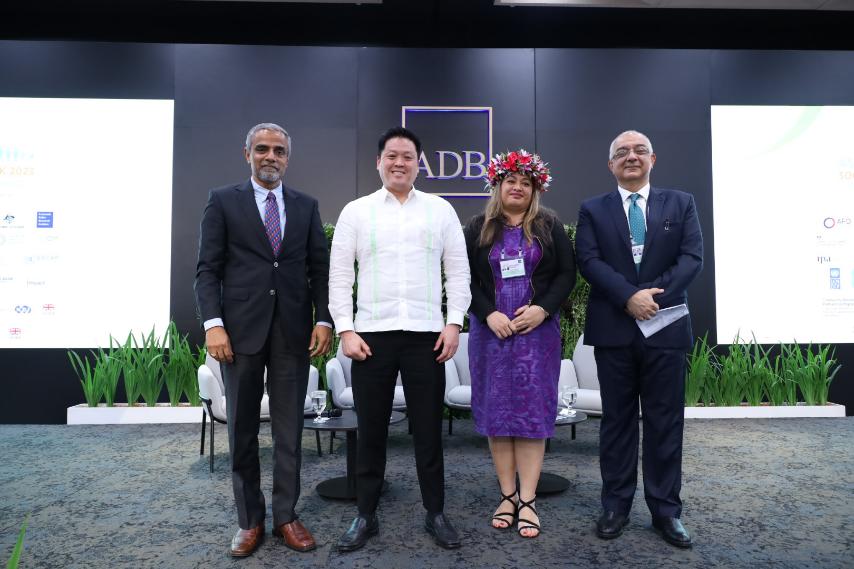A recent report by the Asian Development Bank (ADB) revealed that social protection in the Pacific needs to be more disability inclusive.
The ADB estimates that more than 1.5 million people live with some form of disability in 22 Pacific Island Countries and Territories (PICTs) – and half of that number are older than 60 years.
Released in December last year, the ADB Social Protection Indicator (SPI) report said common barriers to accessing social protection programmes for people with disabilities can include constrained physical access to offices and service providers where benefits are administered; lack of information about programmes and application requirements and stigma and discrimination by social protection personnel.
“Many people with disabilities— especially those who were born with disabilities—have little or no education, and their literacy levels can be low compared with those of people without disabilities. They may find it difficult, therefore, to navigate complex application procedures or compliance conditions.”
“People with disabilities often have lower access to financial and banking services, mobile phones, and other important instruments of distributing social assistance as well.”
The ADB report also highlighted that providing information in accessible formats; ensuring that eligibility criteria do not exclude people with disabilities; and providing physically accessible administration offices for benefits, inclusive data management systems, and accessible payment methods can all contribute to facilitating the access of people with disabilities to social protection programmes.
The goals of disability-targeted programmes depend on the political and social context in a country.
“In many Pacific countries, support for people with disabilities is closely associated with compensation for being unable to work. In this context, disability assessments are linked to the assessment of the capacity to work. In others, support for enabling daily functioning and maximising the ability to live independently drive the design of disability-targeted programmes.”
In Fiji, for example, eligibility is based on an assessment of support needs whereas most countries, a medical assessment is part of the process to qualify for disability status.
In the Cook Islands, one disability-targeted social protection programme is the Infirm Benefit. In 2018, it provided NZ$200 (US$118) per month to 192 people with disabilities as a form of income support. However, this represents merely 6.6 percent of the population of 2,914 people with disabilities who are identified by the Cook Islands Statistics Office data or only 23.0 percent of 840 people with disabilities registered in the Cook Islands Disability Database.
Since many people with disabilities are clearly not receiving this form of social assistance, the Cook Islands National Disability Council admits that there may be gaps in awareness about the Infirm Benefit among people with disabilities. In 2020, the amount doubled to NZ$400(US$236) per month. People with disabilities welcomed the increase but also noted that “NZ$400 (US$236) per month was enough to eat but not to do much else,” which confirmed that although it provides some level of social security, it fails to consider disability-related costs, according to the ADB report.
In seven of the 14 ADB Pacific Developing Member Countries (PDMCs), there are no social assistance programmes targeted to people with disabilities.
Social assistance refers to publicly funded cash and in-kind transfers and services, such as welfare payments, social pensions, and other support for vulnerable groups.
In Fiji the Disability Allowance Scheme of F$90 (US$45) per month was intended to help people with disabilities meet the extra costs that their disabilities incur. It is not means-tested and is available to all people with disabilities, regardless of whether they are employed or receive other forms of support, except for the Social Pension Scheme for older persons.
The number of beneficiaries of the Disability Allowance Scheme in Fiji increased from 2,744 in 2018 to 7,003 people in 2019 to 8,662 people by August 2020 – which represents eight percent of people with disabilities.
People with disabilities are also eligible for a credit of F$40(US$20) per month for travel by bus and up to F$2,000(US$1,000) for livelihood programmes. This is in addition to free health services, including rehabilitation, prosthetics, or mobility devices available to people with disabilities.
Nauru became one of the first countries in the region to introduce a disability allowance in 2008. The amount has increased five times, from AUD$50 (US$31) per fortnight when first introduced to AUD$250(US$158) per fortnight in the 2020–2021 budget. The allowance was received by 159 people with disabilities in 2018, or 1.5 percent of the population.
The ADB said governments in the Pacific region tend to rely on development partners, non-governmental organisations (NGOs), and civil society organisations (CSOs) to provide services and other support to people with disabilities.
SOURCE: PACNEWS














